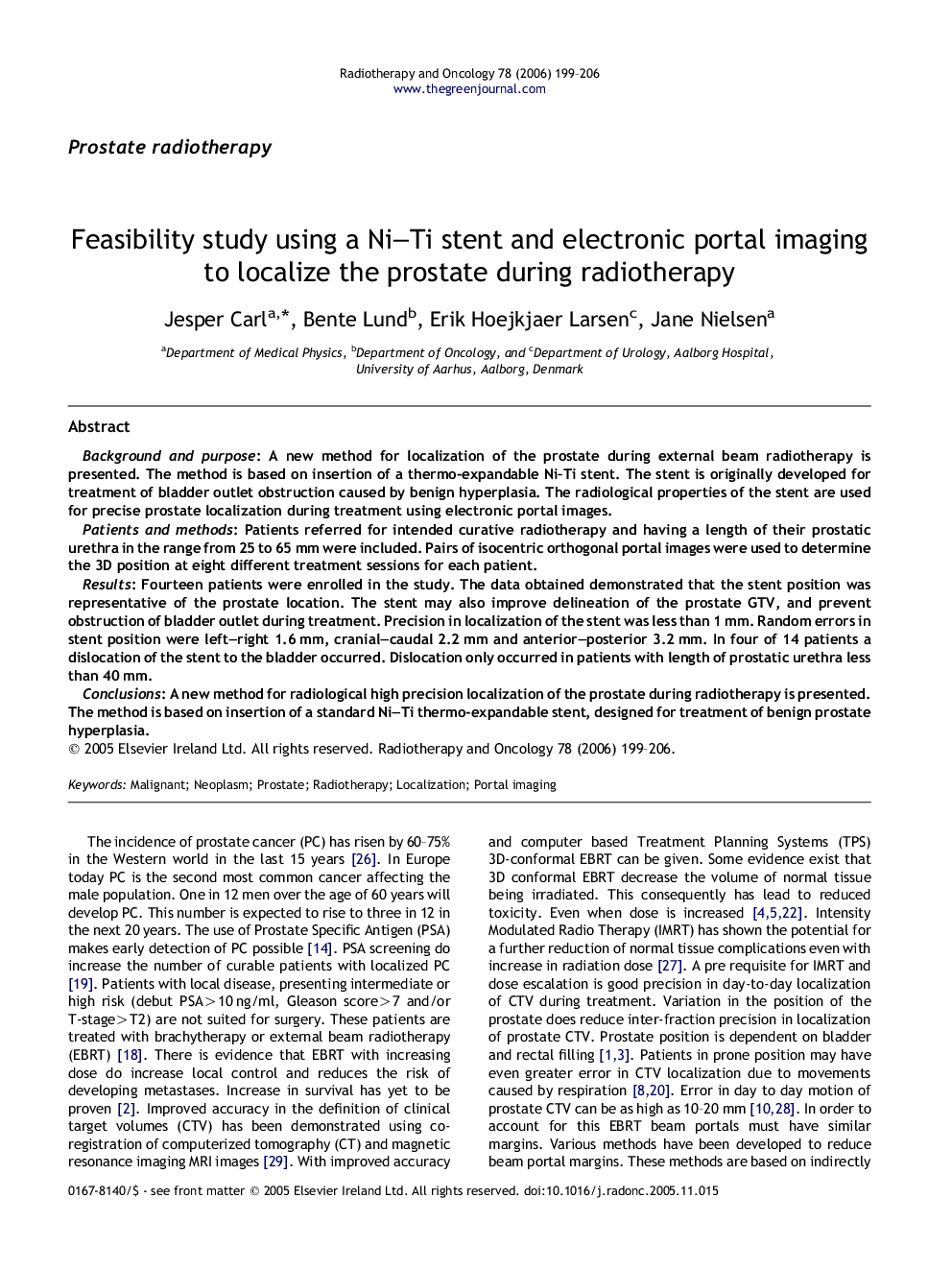| Article ID | Journal | Published Year | Pages | File Type |
|---|---|---|---|---|
| 2161674 | Radiotherapy and Oncology | 2006 | 8 Pages |
Background and purposeA new method for localization of the prostate during external beam radiotherapy is presented. The method is based on insertion of a thermo-expandable Ni–Ti stent. The stent is originally developed for treatment of bladder outlet obstruction caused by benign hyperplasia. The radiological properties of the stent are used for precise prostate localization during treatment using electronic portal images.Patients and methodsPatients referred for intended curative radiotherapy and having a length of their prostatic urethra in the range from 25 to 65 mm were included. Pairs of isocentric orthogonal portal images were used to determine the 3D position at eight different treatment sessions for each patient.ResultsFourteen patients were enrolled in the study. The data obtained demonstrated that the stent position was representative of the prostate location. The stent may also improve delineation of the prostate GTV, and prevent obstruction of bladder outlet during treatment. Precision in localization of the stent was less than 1 mm. Random errors in stent position were left–right 1.6 mm, cranial–caudal 2.2 mm and anterior–posterior 3.2 mm. In four of 14 patients a dislocation of the stent to the bladder occurred. Dislocation only occurred in patients with length of prostatic urethra less than 40 mm.ConclusionsA new method for radiological high precision localization of the prostate during radiotherapy is presented. The method is based on insertion of a standard Ni–Ti thermo-expandable stent, designed for treatment of benign prostate hyperplasia.
